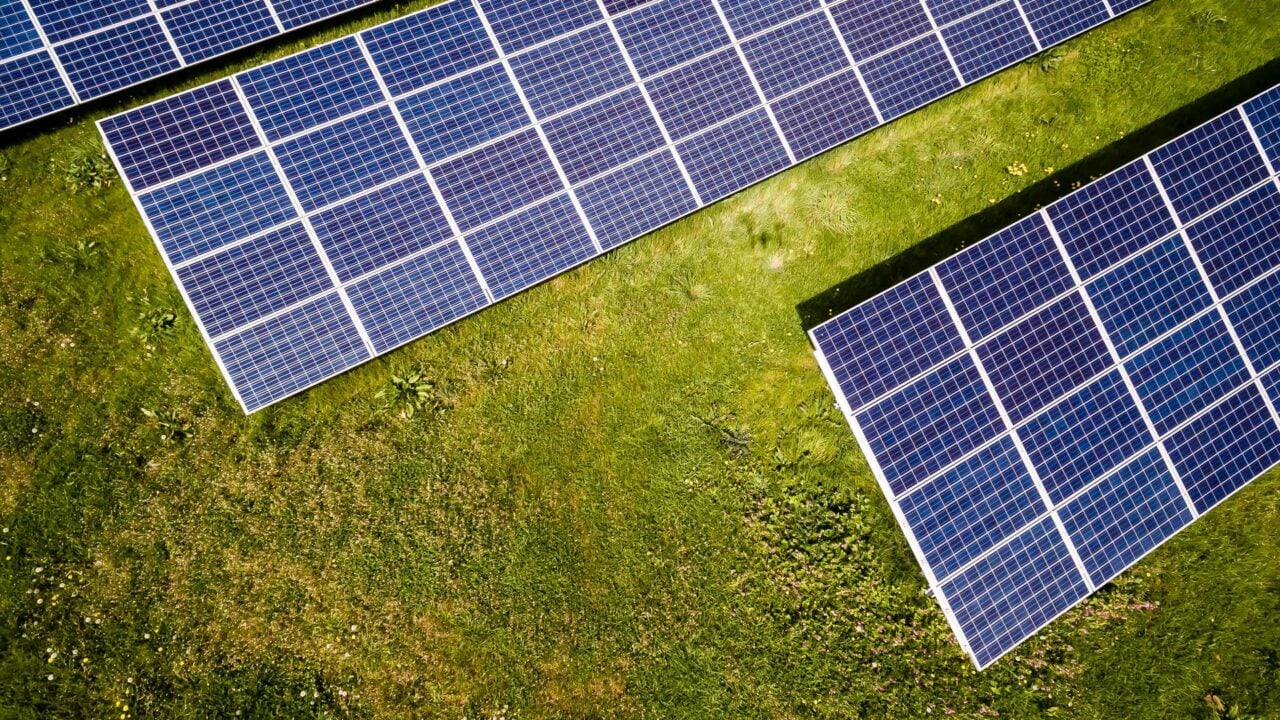
Image: Andreas Gücklhorn (Unsplash).
The inaugural Utility Solar Summit kicked off with discussions around the emergence of the solar 2.0 in the UK.
Since Q1 of 2019, all solar developments in the UK have been developed subsidy-free following the closure of both the feed-in tariff (FiT) and the Renewable Obligations Certificates (ROCs). As the cost of solar technology has continued to fall, this new market has picked up pace, with a pipeline of approximately 18GW of projects in the UK currently.
Ground-mount projects make up the bulk of this pipeline, explained Solar Media’s head of market intelligence Finlay Coleville in the first 20GW of new solar farms: development, construction and supply session at the virtual summit.
Of this, 49.9MW sites – which fall just within England’s Nationally Significant Infrastructure Project (NSIP) 50MW threshold and therefore are what the “sweet spot is” according to Colville – make up the greatest share of both the projects developed over the past couple of years and the upcoming pipeline.
Many of these have snuck in “under the radar” he noted, helping the UK’s installed solar capacity to now reach 14GWp-dc.
Speaking to Solar Power Portal after the first day, Colville said there was no one reason for this quiet development of 50MW projects. Instead it is likely to have been a combination of reasons including investors keeping the development of subsidy-free projects close to their chests for a period, and developers having pre-agreed power purchase agreements (PPAs) that they could just get on with.
“It's a little bit of a strange one,” he added. “But I suspect it was just that companies had committed to doing them. And they just did them. And there was no reason to announce anything.”
Following on from Colville’s introduction, there were three presentations from solar majors, starting with Ronan Kilduff, managing director at Elgin Energy who detailed the company’s new Project Juliet.
Elgin is looking to develop a portfolio of 11 UK projects with a 521MW RTB as part of the project, which was launched at the beginning of June. This is a new model for the company, which currently has a solar pipeline of 3.7GWac.
With “fossil fuels dying on the vine” Kilduff said, the solar sector is set to “blow past its target” of 3GW of new capacity a year in the UK. There has been a convergence of policy and economics, with the drive for net zero meeting the falling technology prices ensuring solar can deliver appropriate returns.
With a learning rate of 28.5%, modules are expected to reach c.$0.10-0.11/W by 2030. This will lead to a LCOE for UK solar in the low £20/MWs, according to Elgin Energy’s predictions.
The maturing economics of solar technology formed a key topic of conversation as the summit moved into the second part of the 20GW of new solar farms topic. Mark Futyan CEO of Anesco detailed how the company had maintained strong through solar’s quiet period, in part thanks to its strong O&M arm.
Anesco – which was acquired by Ara Partners and Aksiom this week – developed a model that allowed it to do “everything by the capital” explained Futyan. It currently has 525MW of solar PV constructed over 103 projects, a 1.4GW PV pipeline and 1.2GW under management.
Between 2012 and 2016 solar was “in the money” he continued, but with the closure of the FiT and ROCs the market switched. This was a “defining period” Colville further explained, that changed solar models or led to insolvency.
Now that the market is switching again to a period of positive growth, despite the short-term impact of component and supply chain challenges driving up module prices, Anesco has a pipeline of 1GW of projects (solar and storage) over the next three years.
The final presentation of the morning came from LONGi’s head of product marketing for Europe, Winfried Wahl, providing the viewpoint of a technology developer. Since the company was established in 2000, it has moved through producing silicon ingots into monocrystalline silicon wafers, PERC solar modules, bifacial PERC and beyond.
Most recently the company has launched its N-Type TOPCon solar cell, which has set a new efficiency record at 25.21%.
LONGi has been part of the industry-wide shift to large format modules, but these are unlikely to get much bigger beyond this point said Wahl, with the focus on the efficiency of the modules as to make them larger would create shipping challenges that could impact the economics.
The afternoon’s session Key components for large-scale solar: modules, inverters & storage kicked off with Ivan Ivanov, European senior product development manager at Huawei. He focused on the company’s involvement in the solar energy market, tracing its first foray into solar power to its now substantial investment into new technology, hinting that exciting things were on the way.
Next, Thilo Kinkel, director of business development at Suntech Power, broke down the European and UK solar energy markets and discussed the division between monofacial and bifacial deployment.
The first day of the summit finished with Solar Media’s Mollie McCorkindale rounding things off by exploring the role of UK councils and other sub-national bodies in solar energy expansion in the UK. This tied back to the first session of the day, where Colville touched on the major players in the sector, from large investors to EPCs and utilities.
Councils may have benefitted from the closure of the subsidies in some ways, he noted, as the absence of the deadline that comes along with it provides more flexibility and reduces risk, allowing them to become a bigger part of the market.
Join us for the second day of the Utility Solar Summit on 16 June! To register click here.

